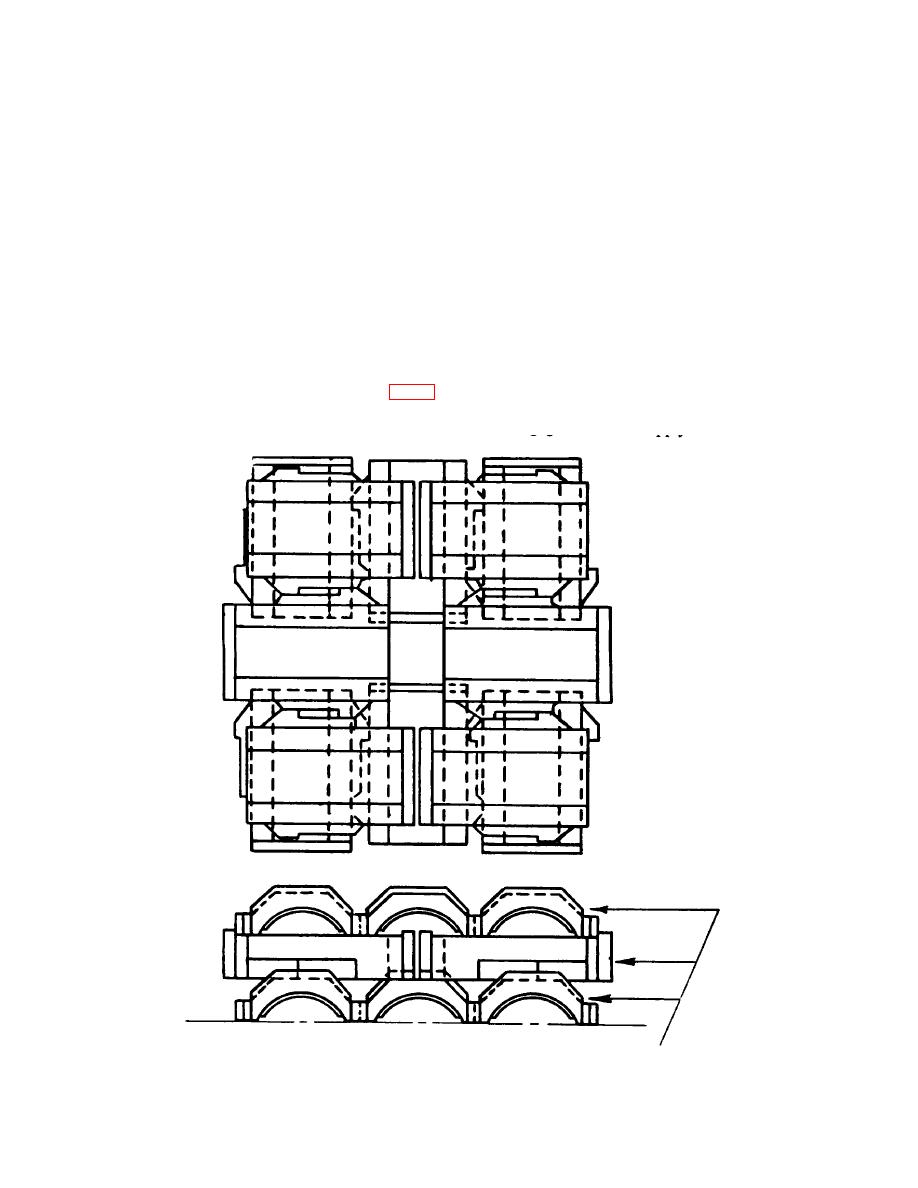
TM 55-203
or scrap sheet metal between layers.
inch of lining metal remains. Such bearings should be
e. Journal Bearing Wedges. New wedges should
tested for loose lining after broaching. This is done by
standing the bearing on end and tapping it with a
conform to the dimensional limits of current regulations.
hammer If the lining is tight, the bearing will have a
Each wedge should be checked out of the bearing and
clear, metallic ring Journal bearings should be selected
should seat properly on the crown, without pinching the
for broaching by proper inspecting and by use of
sides or resting on the lugs. If the front surface of the
appropriate gages.
wedge is bent down, it will not engage the lugs in the
(3) Bearings with lining melted off from overheating
box. Sometimes wedges are too narrow for the bearing;
in service should not be relined.
this will tend to pinch the journal and may ,cause a
(4) When wheels are removed to be turned and
hotbox. If the wedge is flat on top, it cannot rock with
when it is feasible to do so, it is good practice to return
the rotation of the axle as intended. The weight will be
bearings to service with the same journals, provided
unevenly distributed over the bearing, and too much
they are within dimensional limits and linings are tight.
weight in one place will cause sufficient friction to make
(5) Bearings should not be thrown or dropped or
the journal run hot. If the wedge exhibits a bright ridge
allowed to lie around mixed with other material.
over its entire length on top, it is reasonably sure that
(6) In transit and in storage, bearings should be
the wedge is not rocking, but is bearing rigidly against
stowed or stacked to avoid damage to lining. An
the top of the journal box. The following general rules
approved method of stacking bearings is shown in figure
apply:
4-25. Bearings may also be stacked in layers with wood
Figure 4-25. Recommended method of stacking journal bearings.
4-20



 Previous Page
Previous Page
